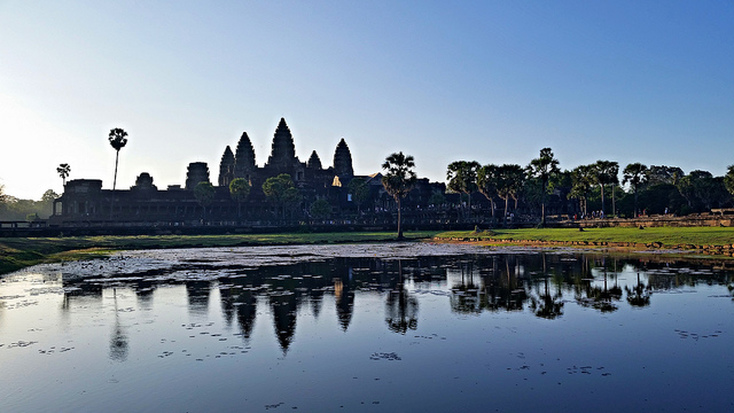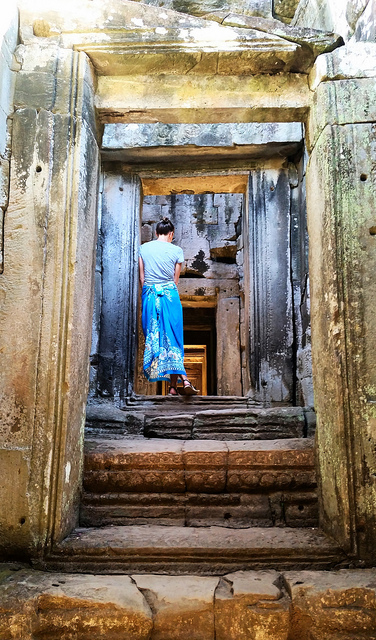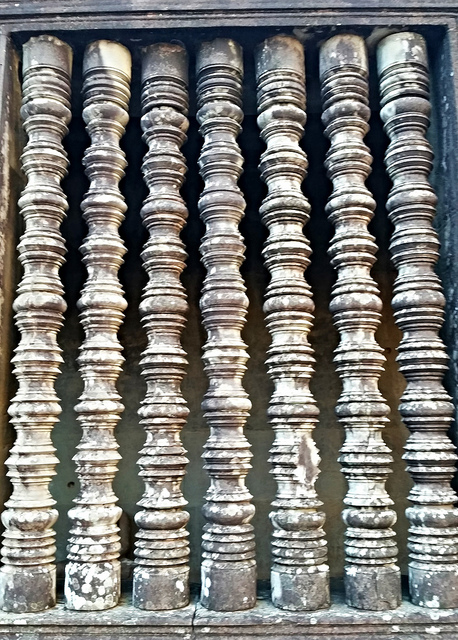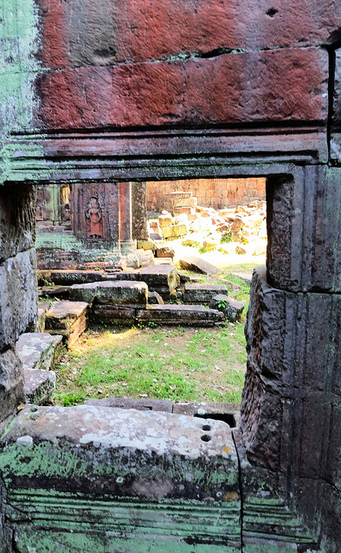|
No visit to Cambodia is complete without a trip to Angkor Archeological Park. In fact, for most travelers, it’s probably the only reason they make the journey to Siem Reap. And it’s well worth the trip. the facts The capital of the Khmer Empire from the 9th to 15th centuries, Angkor began under Jayavarman II, a Hindu monarch, in 802. Over 300 years later, King Suryavarman II built the largest religious monument in the world, Angkor Wat. It’s the focal point and most recognizable building of the Angkor complex, however the true value of Angkor rests with the assortment of temples, monasteries, and residences built by the kings of the Khmer Empire over six centuries. The empire warred and grew, only to recede again, while religious dedication fluctuated. Following Suryavarman II’s building of Angkor Wat, King Jayavarman VII converted the state religion to Mahayana Buddhism and constructed Angkor Thom, Ta Prohm, and Preah Khan. Shortly after, the empire returned to Hinduism before a permanent transition to Theraveda Buddhism in the 14th century. the experience Most visit this UNESCO world heritage site by tuk tuk or hired car. Some go via bus, with a large tour group. But these methods require schedules and programmed shuffling from temple to temple. Instead, we go with the third and probably least popular option: bicycles. When the 4:30am alarm leads to a sunrise over Angkor Wat, waking up is easier. Pedaling through the dark Siem Reap streets, sunlight starts to seep through the trees and glisten on the river beside us. A few kilometers to town, followed by a long, straight stretch through Cambodian jungle, leads to the first and most iconic temple, Angkor Wat. Bikes parked, the new day’s sun glows brighter as we cross a bridge over the temple's surrounding moat. We follow the crowds to a shallow pool of water on the left side for a reflection of the temple’s magnificent outline, back-lit by the Siem Reap sunrise, before heading in to explore. The road from Angkor Wat to Angkor Thom, only a kilometer or two, may be the most beautiful in the whole complex. Slender and straight, it is bordered by red dirt and trees that shoot high into a bright green canopy. Rays of sunlight shoot through the leaves as we approach the picturesque South Gate of Angkor Thom. The gate is incredible in itself, a narrow entrance making way to Bayon with its giant Buddha faces, followed by Phimeanakas, and the Terrace of Elephants. (There is an option to ride an elephant through the South Gate, but don’t do it - see below why not). Following Bayon, we have the option to continue on the “short loop” or the less visited “grand tour”, but it’s three hours into the morning and not yet blazing hot, so we choose to push on (see note below if you choose this route by bike). The ride is rewarded by a calm and shaded stretch of road before reaching Preah Khan, a once Buddhist monastery, now covered in jungle overgrowth. Skipping Neak Pean, we move on to Ta Som, a small temple complex with ancient passageways engulfed by tree roots and limbs. Only a few other visitors during our stop here make the idyllic temple feel even more secluded. We continue on to what will eventually be a 26 mile round trip bike ride with a stop at the famous Ta Prohm (where Tomb Raider was filmed, yawn). It’s beautiful, but currently under repair and surrounded by tour buses and vendors pushing photocopied books, elephant print pants, and other trinkets. Finished in the early afternoon, it’s hard to fathom the enormity of Angkor and its thousand year old structures. They’re breathtaking beyond belief and it’s truly a once in a lifetime experience, which we quietly reflect upon on the long ride home. Raised in a country that would fairly be considered an adolescent in comparison to the rest of the world, Angkor is a reminder that even the biggest and most beautiful places flourish before they fade away. We’re grateful to have the opportunity to visit its remains. the details:
1 Comment
tim
6/8/2015 11:16:06 am
I am learning so much. I especially like the links that you make available. This makes it so much more than just a travel blog. The pictures are always great. Thanks again.
Reply
Your comment will be posted after it is approved.
Leave a Reply. |
Cohica TravelA travel design agency. Categories
All
Archives
October 2023
Follow us on Instagram @CohicaTravel
|
















 RSS Feed
RSS Feed
